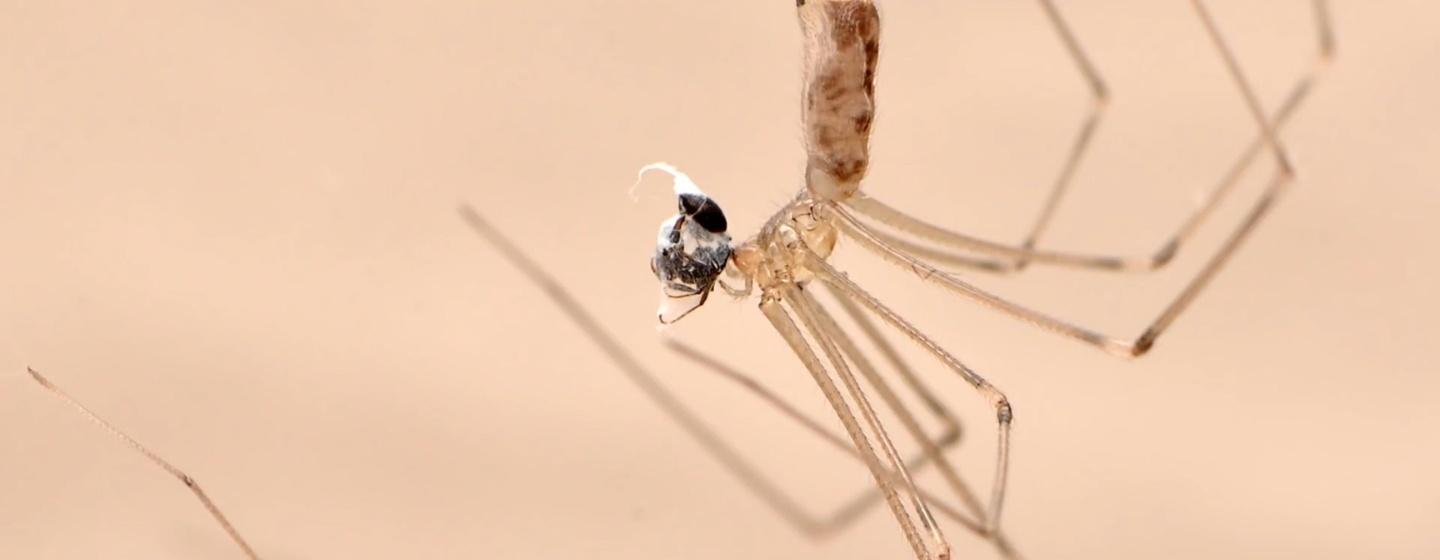The Bugs You’ll Find in Your Home


Have you ever thought about what’s living in your house with you? We explored Sci NC producer Rossie Izlar’s house with NC State Entomologist Matt Bertone to look for spiders and other bugs. And surprise! We found a lot of them.
Rossie admitted that her house isn’t completely spotless. But Bertone says that having some uninvited guests doesn’t necessarily equate to an unclean living space.
“It’s almost impossible to completely rid your house of all arthropods, and most of them aren’t doing anything to you. So don’t freak out.”
Bertone says the size of the house and the presence of houseplants play a role in the number of arthropods you’ll encounter (arthropods are the largest phylum in the animal kingdom, which includes insects). More space and more plants often translate to more bugs. Cleaning obsessively would certainly reduce their presence, but who wants to live that way?
With that reassurance in mind, we ventured inside and started our exploration. And what did we find? Spiders, of course!
Our first encounter was with a small spider known as the cellar spider (Pholcus phalangioides), commonly known as daddy longlegs, at least here in the South. These little critters are harmless, and their fangs are so small and weak that they couldn’t even puncture your skin if they tried.
“You’re more of a threat to them than they are to you,” said Bertone.
But there’s more to discover. We turned our attention to the windowsills, where dead insects and debris often accumulate, serving as a delectable feast for creatures like booklice (Liposcelis).
While the idea of booklice may sound repulsive, if you look at them under the microscope, “They’re actually pretty adorable,” said Bertone.
Oh, and those little spots on your windowsill? That’s spider feces, believe it or not. Most homes have them, but few people even realize it. Spider poop may not top your list of dinner table conversation, but it’s a part of the intricate ecosystem within your home.
Our journey continued, and we spotted yet another spider, a spitting spider (Scytodes thoracica) this time. These spiders are called “spitting” because they can spray venomous silk on their prey. Not exactly what you’d expect from a houseguest, but they’re harmless and even beneficial since they can trap and kill mosquitoes and other bugs.
But what about the dreaded brown recluse spider (Loxosceles reclusa)? Bertone assured us that they’re typically not found in North Carolina, where this house is located. So, you can breathe easy if you’re in the Tar Heel State.
The basement proved to be a hub for arthropods, thanks to its higher humidity. But the bugs down here are also harmless. Take camel cricket (the family Rhaphidophoridae), for instance. These creatures have taken over basements across eastern North America and pose no threat to humans.
And what about those cobweb spiders (Steatoda triangulosa)? They might startle you, but they won’t attack unless they feel threatened.
So, the next time you spot a spider or an insect in your home, take a moment to appreciate the fascinating world of arthropods living alongside you.
“Most people’s reaction to insects and spiders is fear or disgust,” said Bertone. “People are afraid of spiders but they keep dogs all the time. Yet dogs are more dangerous than spiders.”